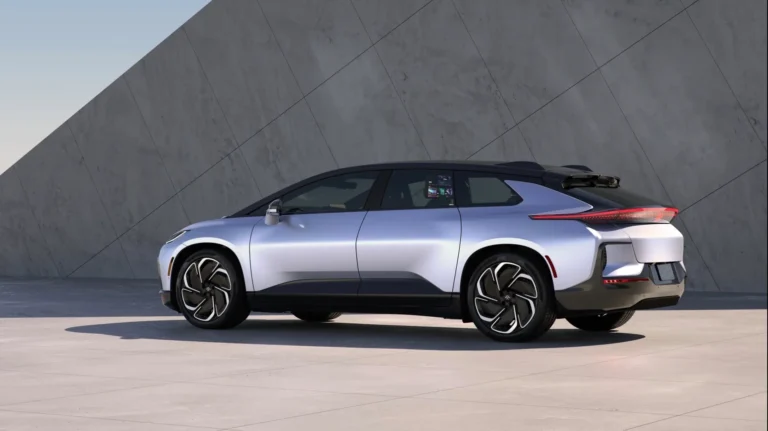
Toshiba Begins Sample Shipments of TB9M001FTG, Its Second SmartMCD™ Motor Control Driver for Automotive Applications
Toshiba Electronic Devices & Storage Corporation has commenced sample shipments of the TB9M001FTG, the second addition to its advanced Smart Motor Control Driver series, SmartMCD™. Designed for automotive use, this new device integrates multiple functionalities into a compact footprint and is engineered to meet the increasing demand for high-performance, space-saving solutions in electric vehicle systems and smart automotive components.
The TB9M001FTG combines several essential features into a single device, including a relay driver function, a Local Interconnect Network (LIN) transceiver, and a built-in microcontroller. It supports the control of two brushed DC motors and includes various input/output and protection features critical for automotive reliability and efficiency.
Meeting the Demands of Automotive Electrification
The automotive industry is undergoing a rapid shift toward electrification and increased electronic control across secondary vehicle systems. As a result, manufacturers are seeking components that offer greater performance, reduced part counts, and compact form factors.
Secondary devices such as power seats, electric windows, wipers, and sunroofs now demand more intelligent, integrated control solutions. Toshiba’s TB9M001FTG addresses these evolving needs by consolidating motor control and communication functions in a single chip. By minimizing the number of discrete components required in automotive electronic control units (ECUs), the SmartMCD™ platform supports efforts to reduce system complexity, size, and cost—key factors in modern vehicle development.
Integrated Architecture for Efficient Motor Control
At the heart of the TB9M001FTG is a 32-bit Arm® Cortex®-M0 processor core that runs at a frequency of 40 MHz. This microcontroller provides robust processing power for automotive motor control applications and is supplemented by ample built-in memory. The device includes 192KB of code flash memory, 16KB of data flash, and 16KB of SRAM, all with built-in error correction code (ECC) functionality. Specifically, the memory is equipped with Single Error Correction and Double Error Detection (SEC/DED), ensuring reliability even under harsh automotive operating conditions.
The TB9M001FTG also includes four low-side drivers designed for relay control, which can be used to drive two brushed DC motors with forward and reverse capability. This function is made possible through the use of two single-pole double-throw (SPDT) relays, enabling precise motor control for applications like electric sunroofs and powered windows.
Moreover, the device incorporates two high-side drivers for power supply switching and a LIN transceiver for automotive communication. These integrated features are managed within a compact 7 mm × 7 mm VQFN48 package, making the TB9M001FTG ideal for space-constrained automotive control units.
Broad Application Scope in the Automotive Sector
The versatile functionality of the TB9M001FTG makes it suitable for a wide range of automotive subsystems. Applications include:
- Electric sunroofs
- Power windows
- Electric wipers
- Power seats
- Other motor-controlled or sensor-actuated subsystems
The SmartMCD™ driver can also be employed as a secondary controller that communicates with the primary ECU via LIN, enabling distributed control across the vehicle. This makes it well-suited for smart actuators, sensor integration, and auxiliary controls in modern vehicles, particularly those incorporating distributed or zonal electrical architectures.
Communication and Diagnostic Features
To enhance system-level integration and safety, the TB9M001FTG includes multiple communication and diagnostic features. These include:
- LIN communication (Responder only): Allows seamless communication with the main ECU.
- PWM and UART communication support: Enhances flexibility for interfacing with other system components.
- Five high-voltage logic switch inputs and four Hall sensor inputs: Enables the reading of external signals and feedback mechanisms.
- Comprehensive error detection mechanisms:
- Over-current protection for both low-side and high-side drivers
- Over-voltage and under-voltage detection for VCC (generated 5V) and VDD (generated 1.5V)
- Thermal shutdown to protect the device during overheating conditions
These robust diagnostic and safety functions help meet the strict requirements of automotive electronic safety standards.
Automotive-Grade Reliability and Safety Compliance
Toshiba has engineered the TB9M001FTG to meet stringent automotive industry standards. The device is AEC-Q100 Grade 1 qualified, confirming that it can operate in ambient temperatures ranging from –40°C to 90°C and junction temperatures up to 150°C.
In terms of functional safety, the device is ASIL-A qualified under the ISO 26262 standard. ASIL-A is the entry-level classification for automotive safety integrity levels and ensures that the device can be used in applications where the risk to human life or vehicle operation from component failure is considered low but still requires structured safety measures.







